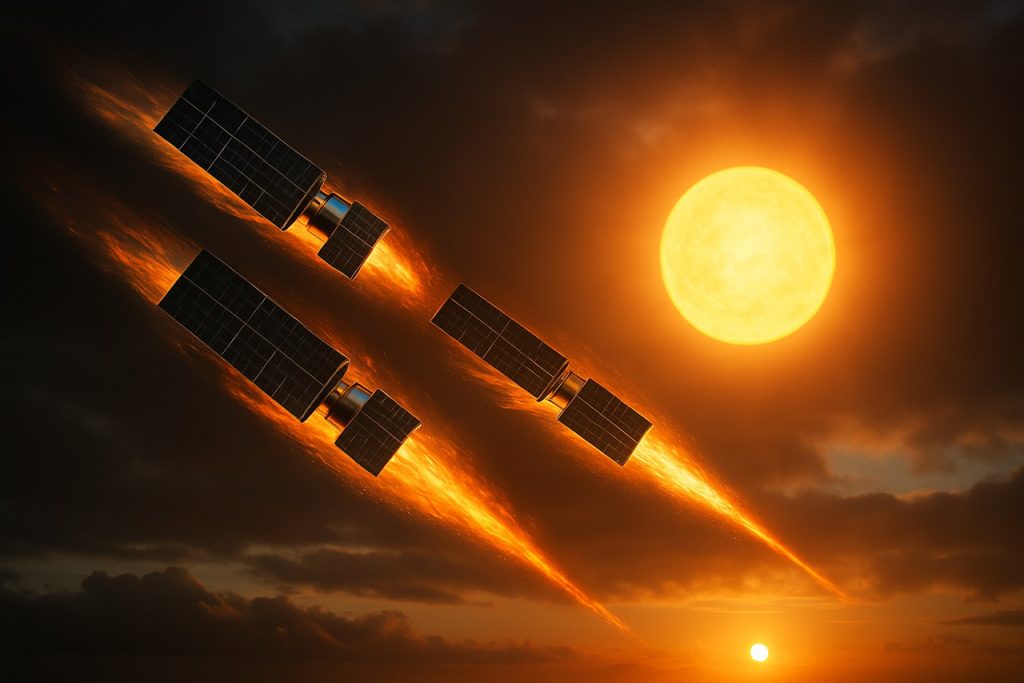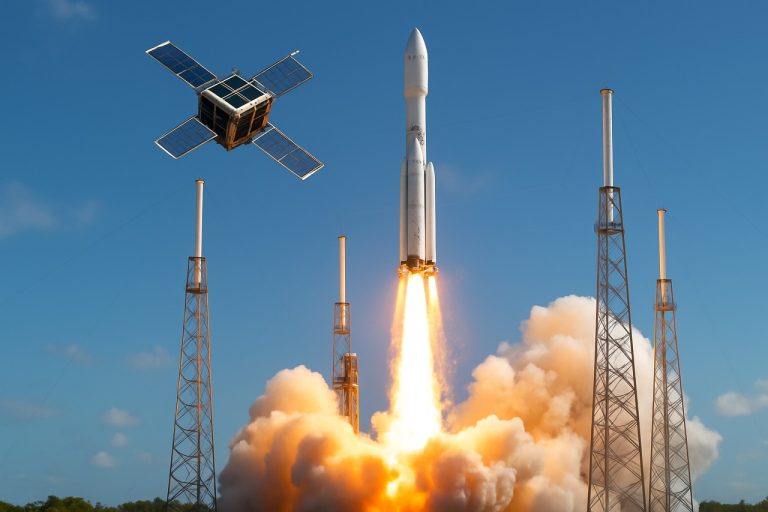
The Sun’s Solar Fury Is Making Starlink Satellites Plummet Back to Earth Faster Than Ever
Record solar activity in 2025 heats up Earth’s atmosphere, causing hundreds of Starlink satellites to drop out of orbit—here’s what to know.
- 316 Starlink satellites reentered Earth’s atmosphere in 2024 alone
- 72% of satellite falls occurred during weak geomagnetic activity
- 7,669 Starlink satellites remain operational out of 8,873 launched
- Solar Cycle 25 is at its activity peak—much stronger than predicted
It’s a space race against the Sun’s rage, and SpaceX’s Starlink satellites are losing altitude. According to a breakthrough NASA-led study, the Sun’s intense activity at the peak of Solar Cycle 25 is sending hundreds of Starlink satellites crashing down to Earth—a trend accelerating in 2025.
Scientists at NASA Goddard Space Flight Center, led by physicist Denny Oliveira, analyzed the fate of 523 Starlink satellites that fell from the sky between 2020 and 2024. Their findings reveal a direct and growing link between solar storms and satellite failures, sending a clear warning across the space industry.
NASA and SpaceX are both watching the skies with ramped-up urgency. Read on to understand why solar weather could rewrite the rules of satellite survival.
Q: Why Are Starlink Satellites Falling More Than Ever?
The culprit is the Sun’s 11-year cycle, which swings from quiet periods to volcanic outbursts of sunspots, flares, and magnetic storms. As Solar Cycle 25 surged to its maximum in 2024 and into 2025, high-energy solar winds bombarded Earth’s upper atmosphere.
Those solar surges heat and expand the atmosphere, upping the air “drag” on satellites circling in low-Earth orbit (LEO). When the drag ramps up, satellites lose speed and altitude—eventually burning up in reentry.
Starlink, with almost 9,000 satellites launched since 2019, became the biggest laboratory for studying this effect. The numbers don’t lie: just two satellites reentered in 2020, but by 2024, that count soared to 316.
Q: Is Solar Storms Are Taking Down All Satellites?
It’s not just massive storms. Surprisingly, NASA’s data shows that 72% of Starlink satellite reentries happened during periods of weak geomagnetic activity, not during dramatic space weather events.
That points to a “slow burn” effect. Persistent, smaller solar outbursts cumulatively sap satellites’ altitude over time—even without headline-making geomagnetic storms.
Yet, satellites that do encounter strong storms drop noticeably faster, hinting at the danger of sudden bursts of solar wrath.
How To Protect Satellites During Solar Maximum?
The spike in Starlink failures has set off alarms about satellite safety and orbital debris. Researchers believe monitoring real-time satellite data—like position, atmospheric drag, and even local air density—can help operators preempt orbital decay.
Experts are calling for new modeling tools to predict how the Sun’s tantrums will affect LEO satellites. There are also new calls for designing more robust satellites and planning more frequent course adjustments during solar storms.
Other global satellite operators are urged to heed the lessons from Starlink’s tribulations, as the Sun enters its most active years.
Want to monitor real-time space weather or learn more? Check out NOAA and ESA for the latest solar activity updates.
Q: Could This Lead to Dangerous Space Junk Collisions?
Yes—the danger is real. If falling satellites aren’t tracked and managed, we risk triggering the “Kessler syndrome”—a domino effect of collisions turning low-Earth orbit into a junkyard.
NASA’s findings may help the industry fine-tune prediction and avoidance strategies, but 2025’s high solar activity means the risk remains at an all-time high.
Stay updated. The future of satellite internet—and safe space traffic—depends on it.
-
2025 Survival Checklist for Satellites:
- Monitor solar forecasts daily via NOAA or ESA
- Track satellite resistance to increased orbital drag
- Prepare for more frequent satellite adjustments
- Support better debris avoidance and collision modeling
- Keep up with research from NASA and space agencies
For everything on the evolving science of solar storms and satellites, visit trusted sources like NASA and Space.com.



